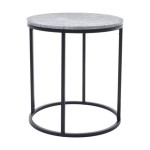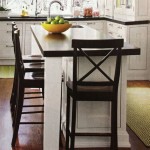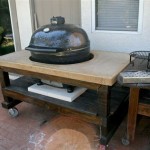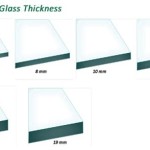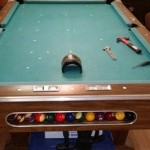Live Edge Table Leg Ideas: Enhancing Natural Beauty with Functional Design
Live edge tables, characterized by their natural, unrefined edges retaining the original contours of the tree, offer a unique blend of rustic charm and contemporary elegance. The selection of table legs plays a crucial role in complementing the character of the wood slab and ensuring the table's overall stability and aesthetic appeal. This article explores various table leg ideas suitable for live edge tables, focusing on design principles, material considerations, and practical applications.The inherent beauty of a live edge table lies in its individuality. No two slabs are identical, making each table a one-of-a-kind piece. The table legs should therefore be chosen to enhance, not detract from, this natural uniqueness. Factors to consider include the size and shape of the slab, the overall design aesthetic of the space, and the desired level of stability. A well-chosen leg design will seamlessly integrate with the wood, creating a harmonious and visually appealing piece of furniture.
Beyond aesthetics, the structural integrity of the table depends heavily on the leg design. The weight and size of the live edge slab dictate the necessary strength and support provided by the legs. Insufficient support can lead to instability, warping, or even structural failure over time. Therefore, careful consideration must be given to the material, construction, and attachment method of the legs.
Metal Legs: A Modern Contrast
Metal legs offer a compelling contrast to the natural warmth and organic shape of live edge wood. The cool, sleek lines of metal can create a contemporary and industrial aesthetic, highlighting the raw beauty of the wood slab. A variety of metal options are available, each offering distinct visual and structural characteristics.
Steel: Steel is a popular choice due to its strength, durability, and versatility. Steel legs can be fabricated in a wide range of styles, from simple hairpin legs to more complex geometric designs. The finish options for steel are also diverse, including powder coating, which provides a durable and aesthetically pleasing surface. Powder coating is available in various colors and textures, allowing for customization to match the surrounding decor. Bare steel, often sealed with a clear coat, offers an industrial and raw aesthetic.
Wrought Iron: Wrought iron legs evoke a sense of traditional craftsmanship and rustic charm. The intricate designs and textured surfaces of wrought iron can add a touch of elegance and sophistication to a live edge table. However, wrought iron is typically heavier than steel and may require more robust attachment methods.
Aluminum: Aluminum is a lightweight and corrosion-resistant option for table legs. While not as strong as steel, aluminum is suitable for smaller live edge tables or those with thinner slabs. Aluminum legs can be anodized or powder coated to achieve a variety of finishes.
When selecting metal legs, it is crucial to consider the thickness and gauge of the metal. Thicker metal will provide greater support and stability, particularly for larger and heavier slabs. The leg placement is also critical. Legs should be positioned to distribute the weight evenly and prevent the table from tipping. Welding is often used to create strong and durable joints in metal leg designs.
Wood Legs: A Harmonious Blend
Using wood for the table legs creates a cohesive and harmonious aesthetic, emphasizing the natural beauty of the wood slab. The choice of wood species, leg design, and finish can significantly impact the overall character of the table. Matching the wood species of the legs to the slab can create a seamless and sophisticated look, while contrasting wood types can add visual interest.
Matching Wood Species: Using the same wood species for the legs as the slab creates a unified and elegant design. This approach emphasizes the natural grain and color variations of the wood, resulting in a cohesive and sophisticated piece of furniture. The legs can be crafted in various styles, from simple tapered legs to more elaborate turned designs.
Contrasting Wood Species: Pairing a live edge slab with legs made from a contrasting wood species can create a striking visual effect. For example, a light-colored maple slab can be paired with dark walnut legs for a dramatic contrast. This approach allows for greater design flexibility and can add visual interest to the table.
Wooden Trestle Legs: Trestle legs provide a classic and sturdy support system for live edge tables. These legs typically consist of two angled supports connected by a horizontal beam. Trestle legs can be crafted from a variety of wood species and can be customized to match the style of the table. They offer excellent stability and are particularly well-suited for larger live edge slabs.
Live Edge Legs: As the name suggests, using live edge wood for the table legs creates a unique and compelling design. These legs retain the natural edge of the wood, mirroring the design of the table top. Live edge legs can be crafted from the same slab as the tabletop, creating a cohesive and unified design. This approach requires careful selection of the wood and precise craftsmanship to ensure stability and structural integrity.
The joinery used to attach wooden legs to the slab is crucial for stability. Options include mortise and tenon joints, dowel joints, and metal brackets. Mortise and tenon joints are considered one of the strongest and most durable options, providing excellent resistance to racking and shear forces. Dowel joints are a simpler alternative but may require additional reinforcement. Metal brackets can be used to provide additional support and stability, particularly for heavier slabs.
Creative and Alternative Leg Designs
Beyond traditional metal and wood legs, a variety of creative and alternative designs can be used to support live edge tables. These designs offer unique aesthetic appeal and can add a personal touch to the furniture. Exploring unconventional materials and forms can result in a truly one-of-a-kind piece.
Hairpin Legs: Hairpin legs are a popular choice for their minimalist design and ease of installation. These legs consist of two or three metal rods bent into a hairpin shape. Hairpin legs are available in various heights and finishes and are suitable for smaller live edge tables or accent pieces. While offering a sleek and modern aesthetic, they may not provide sufficient support for larger or heavier slabs.
Industrial Pipe Legs: Industrial pipe legs evoke a rugged and utilitarian aesthetic. These legs are typically constructed from black iron pipe and fittings. Industrial pipe legs can be customized to create a variety of designs, from simple straight legs to more complex geometric structures. This design choice complements rustic and industrial-themed interiors.
Geometric Leg Designs: Geometric leg designs offer a contemporary and artistic approach to table support. These legs can be constructed from metal, wood, or a combination of both. Geometric designs can range from simple triangles and squares to more complex and abstract forms. The key is to ensure the design provides adequate stability and support for the table top.
Repurposed Materials: Using repurposed materials for table legs can add a unique and sustainable element to the design. Examples include reclaimed wood beams, vintage metal machinery parts, or even salvaged architectural elements. The use of repurposed materials can create a conversation piece and add a personal touch to the furniture.
Acrylic Legs: While a less common choice, clear acrylic legs can provide an ethereal and modern look, allowing the live edge slab to appear as if it is floating. Acrylic legs are best suited for smaller, lighter slabs and require careful attention to weight distribution. The transparency of the acrylic keeps the focus solely on the wood's natural beauty.
When considering creative leg designs, it is crucial to prioritize stability and structural integrity. The weight and size of the live edge slab must be taken into account to ensure the legs can adequately support the table. Professional fabrication or consultation with a structural engineer may be necessary for complex or unconventional designs.
Ultimately, the ideal table leg design for a live edge table depends on a variety of factors, including the size and shape of the slab, the desired aesthetic, and the overall style of the space. By carefully considering these factors and exploring the various options available, it is possible to create a stunning and functional piece of furniture that celebrates the natural beauty of the wood.

Live Edge Table Leg Ideas A Comprehensive Guide Design59

30 Live Edge Table Leg Ideas Legs Coffee

Table Legs W10 X H28 Set Of 4 Pcs Metal Desk Diy Steel Furniture For Large Dining Flowyline 506 Faras

Rustic And Refined Live Edge Wood

Table Legs W26x H28 Set Of 2 Pcs Metal For Farmhouse Dining Kitchen Furniture Desk Flowyline Design 411 Draco

Custom River Table Legs And Base Options Cvcf

Live Edge Tables

Table Legs And Bases For Hardwood Slab Tops

Table Legs W22x H28 Set Of 2 Pcs Diy Metal Steel Furniture For Desk Dining Live Edge Top Flowyline Design 419 Nura

Wood Table Legs Dining Leg Idea Slab


